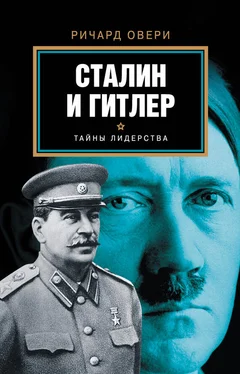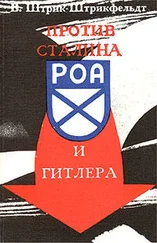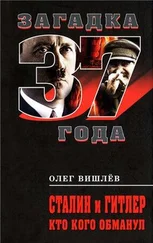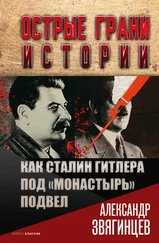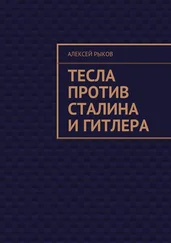85. Fraenkel, Dual State, p. 109. See too J. W. Bendersky Carl Schmitt: Theorist for the Reich (Princeton, NJ, 1983), pp. 35, 87;
B. Rüthers Carl Schmitt in Dritten Reich. Wissenschaft als Zeitgeist-Verstärkung (Munich, 1989), pp. 41–4.
86. J. W. Jones The Nazi Concept of Law (Oxford, 1939), p. 19.
87. R. Conquest (ed.) Justice and the Legal System in the USSR (London, 1968), p. 13; J. Hazard, I. Shapiro and P. B. Maggs (eds) The Soviet Legal System (New York, 1969), pp. 5–6; P. Beirne and R. Sharlet ‘Toward a General Theory of Law and Marxism: E. B. Pashukanis’, in P. Beirne (ed.) Revolution in Law: Contributions to the Development of Soviet Legal Theory, 1917–1938 (New York, 1990), pp. 23–4.
88. Conquest, Justice and the Legal System, p. 13; R. Sharlet, P. B. Maggs and P. Beirne ‘P. I. Stuchka and Soviet Law’, in Beirne, Revolution in Law, pp. 49–50. See too J. Burbank ‘Lenin and the Law in Revolutionary Russia’, Slavic Review, 54 (1995), pp. 23–44.
89. Beirne and Sharlet, ‘Toward a General Theory’, p. 36.
90. P. H. Solomon Soviet Criminal Justice Under Stalin (Cambridge, 1996), pp. 20–24, 34–8. By 1928 100 per cent of procurators were party members, and 85 per cent of judges in people’s courts.
91. Hazard et aL, Soviet Legal System, p. 6.
92. D. Pfaff Die Entwicklung der sowjetischen Rechtslehre (Cologne, 1968), pp. 115–21; Beirne and Sharlet, Toward a General Theory’, pp. 34, 39.
93. Guins, Soviet Law and Soviet Society, p. 31.
94. R. Sharlet and P. Beirne ‘In Search of Vyshinsky: the Paradox of Law and Terror’, in Beirne, Revolution in Law, pp. 150–51; Guins, Soviet Law and Soviet Society, pp. 30–31.
95. Sharlet and Beirne, ‘In Search of Vyshinsky’, pp. 138–40.
96. Pfaff, sowjetischen Rechtslehre, p. 115.
97. Pfaff, sowjetischen Rechtslehre, p. 118; see too I. P. Trainin The Relationship between State and Law’, 1945 in Hazard, Soviet Legal Philosophy, pp. 444–5, 446–8.
98. Z. L. Zile (ed.) Ideas and Forces in Soviet Legal History: a Reader on the Soviet State and the Law (Oxford, 1992), p. 277; E. Huskey ‘Vyshinsky, Krylenko, and Soviet Penal Policies in the 1930s’, in Beirne, Revolution in Law, pp. 184–6; P. H. Solomon The Bureaucratization of Criminal Justice under Stalin’, in P. H. Solomon (ed.) Reforming Justice in Russia, 1864–1996 (New York, 1997), pp. 229–32.
99. Bender sky, Carl Schmitt, p. 35.
100. Koenen Der Fall Carl Schmitt, p. 609; H. Müller-Dietz Recht im Nationalsozialismus (Baden-Baden, 2000), p. 5; G. Yieberg Justiz in nationalsozialistischen Deutschland (Bundesministerium der Justiz, Cologne, 1984), pp. 28–9.
101. Rüthers, Carl Schmitt im Dritten Reich, p. 60.
102. Müller, Hitlers Justice, p. 76.
103. Roberts, House that Hitler Built, p. 285; Müller, Hitler’s Justice, p. 72; D. Majer Grundlagen des nationalsozialistischen Rechtssystems (Stuttgart, 1987), p. 104; Koenen, Der Fall Carl Schmitt, p. 608.
104. On Schmitt see Bendersky, Carl Schmitt, pp. 38–9, 87–8; R. Cristi Carl Schmitt and authoritarian liberalism (Cardiff, 1998), pp. 5–15. Fora general biography D. Blasius Carl Schmitt: Freussischer Staatsrat im Hitlers Reich (Göttingen, 2001).
105. Rüthers, Carl Schmitt im Dritten Reich, p. 53.
106. Koenen, Der Fall Carl Schmitt, p. 608; Müller, Hitler’s Justice, p. 71.
107. Rüthers, Carl Schmitt im Dritten Reich, pp. 59–66; Cristi, Carl Schmitt, pp. 12–15.
108. Rüthers, Carl Schmitt im Dritten Reich, pp. 53–5; Koenen, Der Fall Carl Schmitt, p. 601.
109. E. Rabofsky and G. Oberkofl er Verborgene Wurzeln der NS-Justiz: Strafrechtliche Rüstung für zwei Weltkriegen (Vienna,
1985), p. 97.
110. Müller, Hitler’s Justice, pp. 68–9; Rabofsky and Oberkofl er, Verborgene Wurzeln, pp. 83–4.
111. Müller, Hitler’s Justice, pp. 60–65.
112. Majer, Grundlagen des nationalsozialistischen Rechtssystems, p. 103.
113. Majer, Grundlagen des nationalsozialistischen Rechtssystems, pp. 101–2; Fraenkel, Dual State, pp. 40, 107–12.
114. Majer, Grundlagen des nationalsozialistischen Rechtssystems, p. 103.
115. Roberts, House that Hitler Built, p. 286.
116. Koenen, Der Fall Carl Schmitt, p. 612. The attribution was made by Göring in July 1934.
117. Hazard, Soviet Legal Philosophy, p. 370.
118. Fieberg, Justiz im ns Deutschland, p. 28.
119. Conquest, Justice and the Legal System, p. 17.
120. Majer, Grundlagen des nationalsozialistischen Rechtssystems, p. 104.
121. Rabofsky and Oberkofl er, Verborgene Wurzeln, pp. 96–7; Müller, Hitler’s Justice, pp. 76–7.
122. Zile, Ideas and Forces, pp. 265–6, decree ‘On Protecting and Strengthening Public (Socialist) Property’, 7 August 1932.
123. Zile, Ideas and Forces, pp. 297–8, decree ‘On Supplementing the Statute on Crimes Against the State… with Articles Covering Treason’.
124. Hazard et al., Soviet Legal System, pp. 5–6; E. Ginzburg Into the Whirlwind (London, 1967), p. 131.
125. Rabofsky and Oberkofl er, Verborgene Wurzeln, pp. 85–6; Müller, Hitler’s Justice, p. 74.
126. Pfaff, sowjetischen Rechtslehre, p. 117.
127. Royal Institute of International Affairs Nationalism (London, 1939), p. 72.
128. Wetter, Dialectical Materialism, p. 176.
129. Guins, Soviet Law and Soviet Society, p. 32.
130. Scholder, Requiem for Hitler, pp. 47–8.
131. Kolnai, War Against the West, pp. 55–6.
132. Bendersky, Carl Schmitt, pp. 38–9; Müller, Hitler’s Justice, p. 72.
133. Kolnai, War Against the West, p. 289.
134. G. Neesse Die Nationalsozialistische Deutsche Arbeiterpartei (Stuttgart, 1935), p. 10.
135. Majer, Grundlagen des nationalsozialistischen Rechtssystems, p. 103.
136. Wetter, Dialectical Materialism, p. 268.
137. Douglas, God among the Germans, p. 25.
138. V. Kravchenko I Chose Freedom: The Personal and Political Life of a Soviet Offi cial (London, 1947), p. 275.
139. de George, Soviet Ethics and Morality, p. 83.
140. Guins, Soviet Law and Soviet Society, p. 30.
141. Kolnai, War Against the West, pp. 291, 293–4; on the ideal of hardness see J. Hoberman ‘Primacy of Performance: Superman not Superathlete’, in J. A. Mangan (ed.) Shaping the Superman: Fascist Body as Political Icon – Aryan Fascism (London, 1999), pp. 78–9.
142. Imperial War Museum, London, FO 645, Box 157, testimony of Rudolf Höss taken at Nuremberg, 5 April 1946, p. 11.
143. Trevor-Roper, Hitler’s Table Talk, p. 304; Pfaff, sowjetischen Rechtslehre, p. 111.
1. Uncensored Germany: Letters and News Sent Secretly from Germany to the German Freedom Party (London, 1940), pp. 71–3, letter from a teacher, 14 August 1939.
2. Uncensored Germany, pp. 69–73. See too B. Engelmann In Hitler’s Germany: Everyday Life in the Third Reich (London, 1988), p. 38. Engelmann estimated that between 10 and 18 per cent of his classmates at school were ‘real Nazis’.
3. See for example R. Gellately Backing Hitler: Consent and Coercion in Nazi Germany (Oxford, 2001); N. Frei ‘People’s Community and War: Hitler’s Popular Suppott’, in H. Mommsen (ed.) The Third Reich between Vision and Reality: New Perspectives on German History 1918–1945 (Oxford, 2001), pp. 59–74; D. Hoffmann Stalinist Values: the Cultural Norms of Soviet Modernity 1917–1941 (Ithaca, NY, 2003).
4. G. M. Ivanova Labor Camp Socialism: the Gulag in the Soviet Totalitarian System (New York, 2000), p. 51: a farmworker was found to have 850 grammes of rye concealed, and was sentenced by the Belgorod District Court to fi ve years in a camp in 1947. H. James ‘The Deutsche Bank and the Dictatorship 1933–1945’, in L. Gall et aL The Deutsche Bank, 1870–1945 (London, 1995), p. 350. The bank director Hermann Kohler was executed for saying that National Socialism was ‘nothing more than a fart’.
Читать дальше
Конец ознакомительного отрывка
Купить книгу
